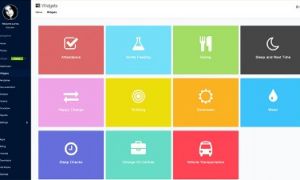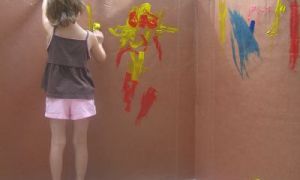The following are 8 Principles that reflect contemporary theories and research evidence concerning children and young people’s play, leisure and learning and place-based and relational pedagogies.
In school-age care settings, the Principles underpin the Practices focused on collaborating with all children and young people to make progress in relation to the Outcomes. Educators consider ethical, socially just and inclusive principles for children and young people’s well-being, learning and development when they:
- build secure, respectful and reciprocal relationships
- develop partnerships
- are respectful of diversity
- embed Aboriginal and Torres Strait Islander perspectives
- commit to equity, inclusion and high expectations
- consider sustainability in all its forms
- engage in critical reflection and professional learning
- exercise collaborative leadership and work as a team
Partnerships That Are Reciprocal, Secure, And Respectful
In environments where children of school age are cared for, supportive connections are crucial. Community is built in school-age care settings on the basis of safe, respectful, and reciprocal relationships between children and young people, their classmates, families, and educators. Children and teenagers feel like valued members of the "family" or group of school-age care when they are safe, secure, respected, and given the right amount of responsibility.
Partnerships
Respecting one another's views, expectations, and values and relying on one another's expertise and skills are the cornerstones of successful partnerships. Children and teenagers of school age participate in partnerships across a variety of contexts and situations. In order to support children and young people's well-being, learning, and development, educators are aware of the diversity of the children and young people with whom they deal and the value of building relationships with families, neighbours, and other professionals, including teachers in schools. Strong connections between these settings make children and young people feel good, and educators are more likely to accomplish their goals when they collaborate with these contributors.
Respect For Diversity
There are numerous methods to exist, to be, and to know. Children and teenagers are born into a culture that is shaped by experiences, values, and beliefs of specific families and communities in addition to customary practices, heritage, and ancestral knowledge. It is important to take into account the context of family practices, values, and beliefs in order to be conscious of and comprehend diversity in school-age care.
Views From Aboriginal And Torres Strait Islander People
Growing a strong identity requires giving Aboriginal and Torres Strait Islander children and youth opportunities to see themselves, their identities, and cultures mirrored in their surroundings. A crucial strategy for advancing reconciliation is the inclusion of Aboriginal and Torres Strait Islander perspectives in every educator's theory and practice. The achievement of every Australian child's right to know about the histories, knowledge systems, cultures, and dialects of Australia's First Nations is furthered by this, which also supports the Closing the Gap commitments.
Equity, Inclusiveness, And Lofty Standards
All children and young people, regardless of their circumstances, strengths, capabilities, or various ways of doing and being, have the right to engage in inclusive education and care, according to educators who are dedicated to equity. They design inclusive learning environments, use adaptable and knowledgeable practices, and make reasonable adjustments to enhance program access, involvement, and engagement. This promotes children's and young people's well-being and favourable results in all of their diversity.
Sustainability
There are many difficulties facing both humanity and the planet that all living creatures share. Children and educators can play significant and active roles in developing and supporting sustainable communities.
Continuous Professional Development And Critical Thought
Teachers are always looking for new methods to expand their professional knowledge, sharpen their skills, and create learning environments. They appreciate the continuity and depth of the local knowledge shared by community members, including Aboriginal and Torres Strait Islander Elders, and learn alongside children, young people, families, and the local community.
Collaboration And Collaborative Leadership
All educators engage in some form of leadership in their everyday interactions with kids, teens, families, and other educators. As they accept both professional and personal accountability for their actions and the choices they make, educators set the example for their own ethical practice. A focus on shared practices that are based on a sense of professional accountability and shared responsibility for children and young people's welfare, learning, and development is necessary for collaborative leadership and collaboration.
Further Reading
MTOP Learning Outcomes V2.0 - The following articles list the 5 MTOP Learning Outcomes and their sub-outcomes (Version 2.0).
How Educators Promote MTOP Outcomes 2.0 - The following list gives educators examples of how to promote children's learning in each individual learning outcome.
How Children Achieve MTOP Outcomes V2.0 - This is a guide for educators on what to observe under each sub-learning outcome from the MTOP Framework when a child is engaged in play and learning.
MTOP Learning Outcomes Posters Version 2.0 - MTOP Learning Outcomes Posters Version 2.0 displays the main MTOP Learning Outcomes and the sub-outcomes. They can be used to display within the service or used as a reference for documentation and planning. The Learning Outcomes are to be used to reflect on children’s learning and focus on what a child can achieve.
MTOP Outcome 1 - Children And Young People Have A Strong Sense Of Identity V2.0 - The following lists the sub-outcomes, examples of evidence of when children can achieve each sub-outcome and how educators can promote and help children to achieve MTOP Learning Outcome 1: Children And Young People Have A Strong Sense Of Identity.
MTOP Outcome 2: Children And Young People Are Connected With And Contribute To Their World V2.0 - The following lists the sub-outcomes, examples of evidence of when children can achieve each sub-outcome and how educators can promote and help children to MTOP Outcome 2: Children And Young People Are Connected With And Contribute To Their World V2.0.
MTOP Outcome 3 - Children And Young People Have A Strong Sense Of Wellbeing V2.0 - The following lists the sub-outcomes, examples of evidence that children can achieve each sub outcome and how educators can promote and help children to achieve MTOP Learning Outcome 3: Children Have A Strong Sense Of Wellbeing V2.0.
MTOP Outcome 4 - Children And Young People Are Confident And Involved Learners V2.0 - The following lists the sub-outcomes, examples of evidence that children can achieve each sub-outcome and how educators can promote and help children to achieve MTOP Learning Outcome 4 - Children And Young People Are Confident And Involved Learners V2.0.
MTOP Outcome 5 - Children And Young People Are Effective Communicators V2.0 - The following lists the sub-outcomes, examples of evidence when children achieve each sub-outcome and how educators can promote and help children to achieve MTOP Learning Outcome 5 - Children And Young People Are Effective Communicators V2.0.
MTOP Posters With Images V2.0 - The MTOP Posters With Images can be used to display within the service. Each individual outcome includes an image and the sub-outcomes. The Learning Outcomes are to be used to reflect on children’s learning and focus on what a child can achieve. These include Version 2.0 outcomes which were recently updated (2023).
Reference:
My Time Our Place, Framework For School Age Care In Australia, V2.0, 2022


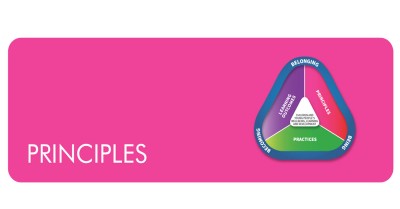
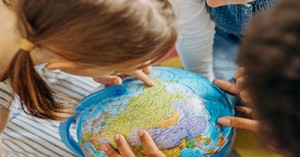
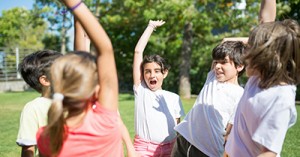
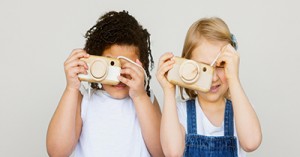
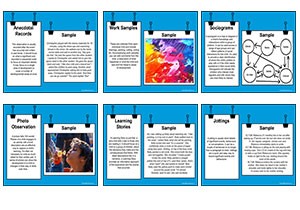
 As an Educator in Australia, your pay rate falls under the Children’s Services Award 2010. This award states the minimum amount that an employer can
As an Educator in Australia, your pay rate falls under the Children’s Services Award 2010. This award states the minimum amount that an employer can When working as a qualified Early Childhood Teacher (with a university degree) within a service, your rate of pay will come from the Educational Services
When working as a qualified Early Childhood Teacher (with a university degree) within a service, your rate of pay will come from the Educational Services When working as a Diploma Qualified Educator your pay rate is from the Children's Services Award 2010. This Award states your minimum rate of pay
When working as a Diploma Qualified Educator your pay rate is from the Children's Services Award 2010. This Award states your minimum rate of pay When working as a Cert 3 Qualified Educator, your pay rate is from the Children's Services Award 2010. This Award states your minimum rate of
When working as a Cert 3 Qualified Educator, your pay rate is from the Children's Services Award 2010. This Award states your minimum rate of Educational Leaders play a crucial role in their early childhood service by ensuring that the educational program aligns with best practices and supports the holistic
Educational Leaders play a crucial role in their early childhood service by ensuring that the educational program aligns with best practices and supports the holistic In early childhood education and care, ratios are more than a technicality—they are a frontline safeguard. Every child deserves responsive supervision, emotional connection, and developmental
In early childhood education and care, ratios are more than a technicality—they are a frontline safeguard. Every child deserves responsive supervision, emotional connection, and developmental With the new national child safety reforms kicking in on 1 September 2025, early childhood services like yours have a real opportunity to lead the
With the new national child safety reforms kicking in on 1 September 2025, early childhood services like yours have a real opportunity to lead the Here’s a comprehensive Mobile Phone and Smart Watch Policy tailored for early childhood education and care (ECEC) services in Australia, aligned with the latest 2025
Here’s a comprehensive Mobile Phone and Smart Watch Policy tailored for early childhood education and care (ECEC) services in Australia, aligned with the latest 2025 The Sea of Fish Challenge is a national initiative that invites children, educators, families, and communities to create and display fish artworks as a symbol
The Sea of Fish Challenge is a national initiative that invites children, educators, families, and communities to create and display fish artworks as a symbol Across the early childhood education and care sector, educators are sounding the alarm: current staffing ratios are insufficient to deliver safe, meaningful, and developmentally appropriate
Across the early childhood education and care sector, educators are sounding the alarm: current staffing ratios are insufficient to deliver safe, meaningful, and developmentally appropriate
